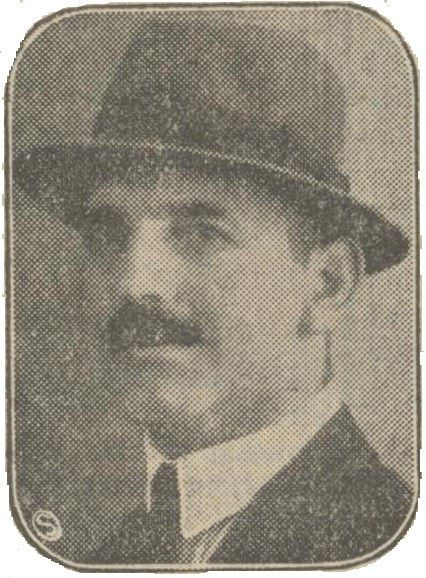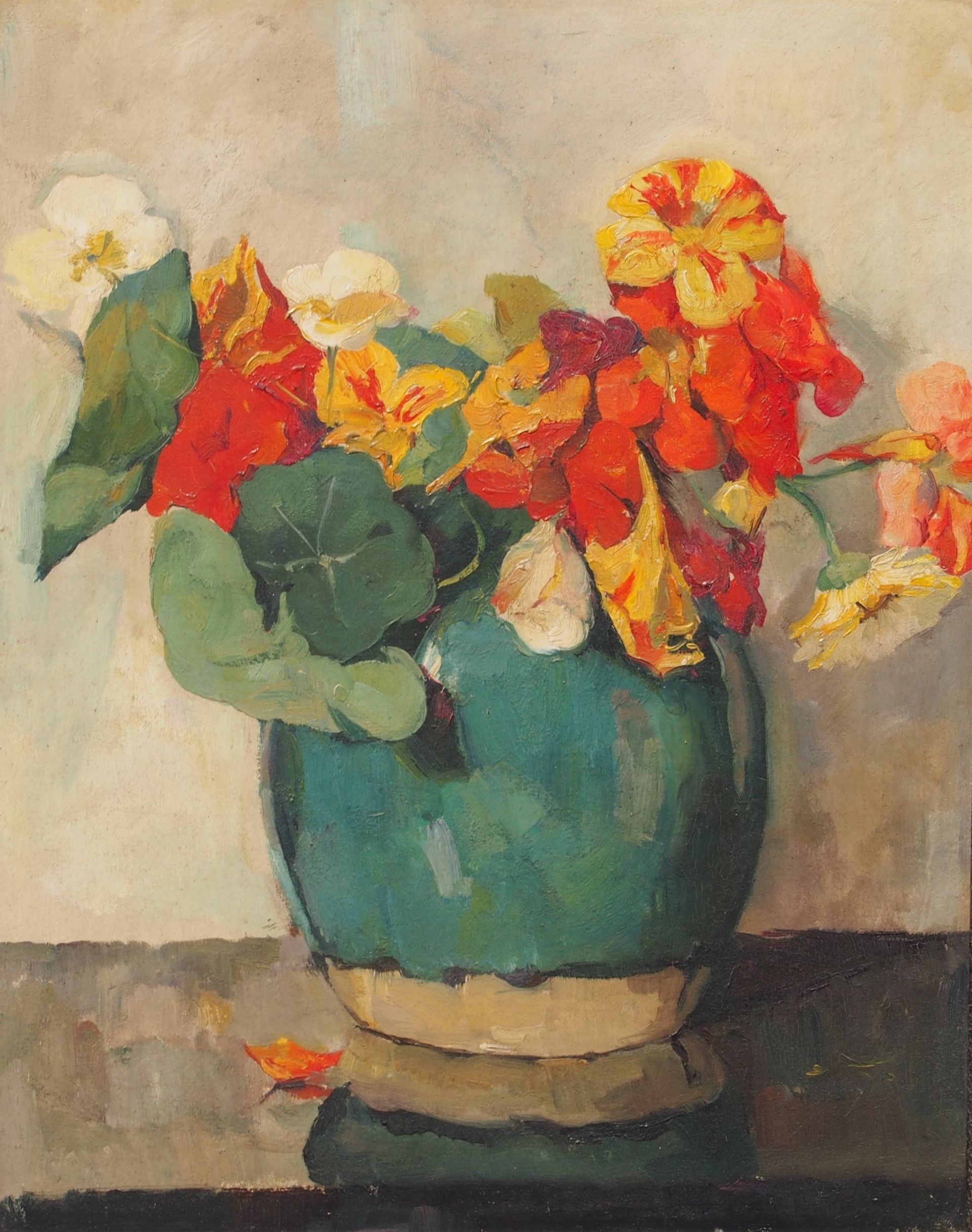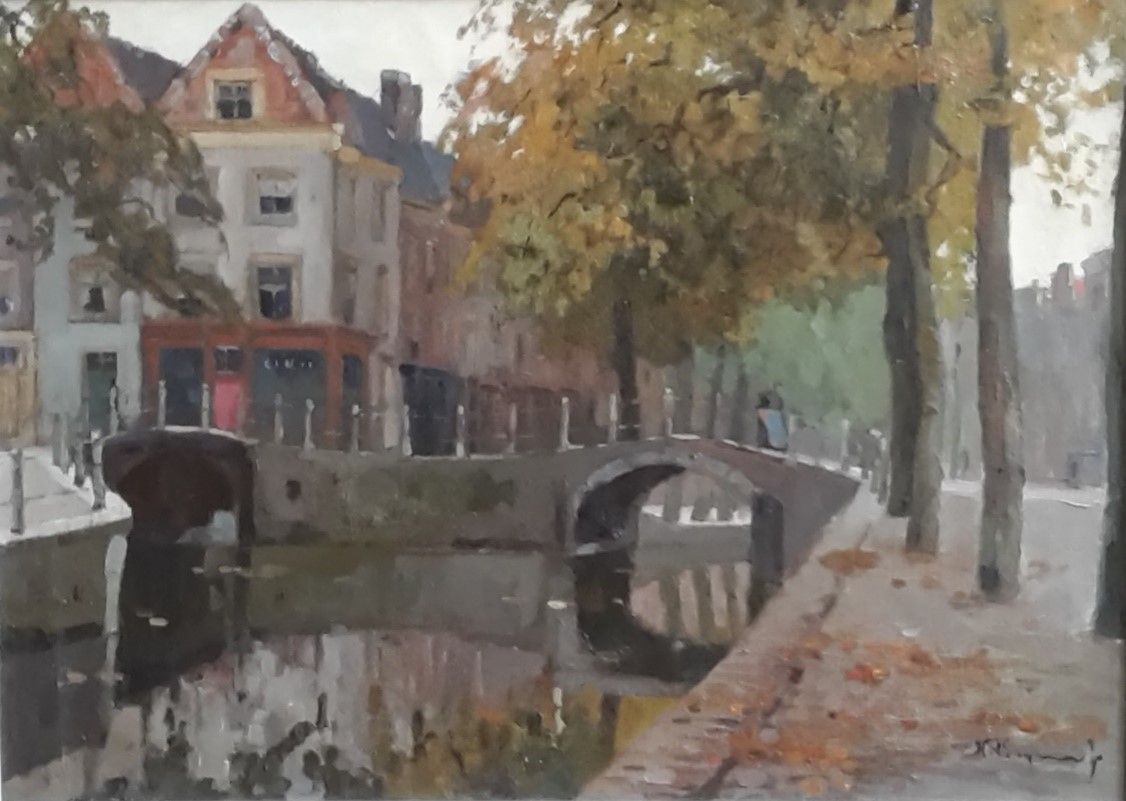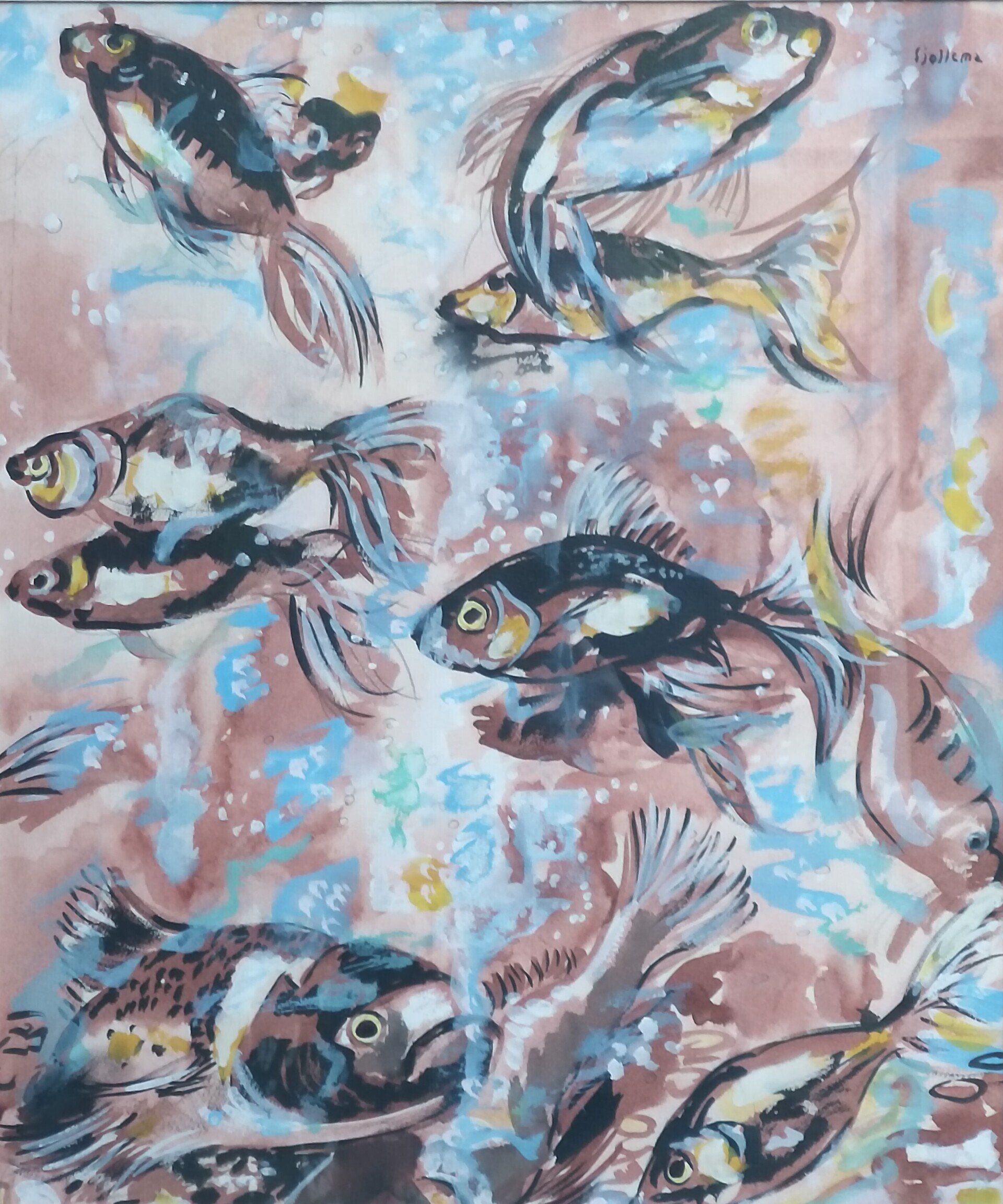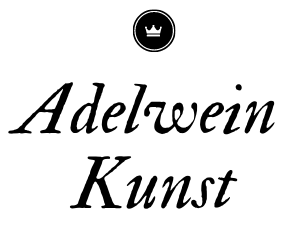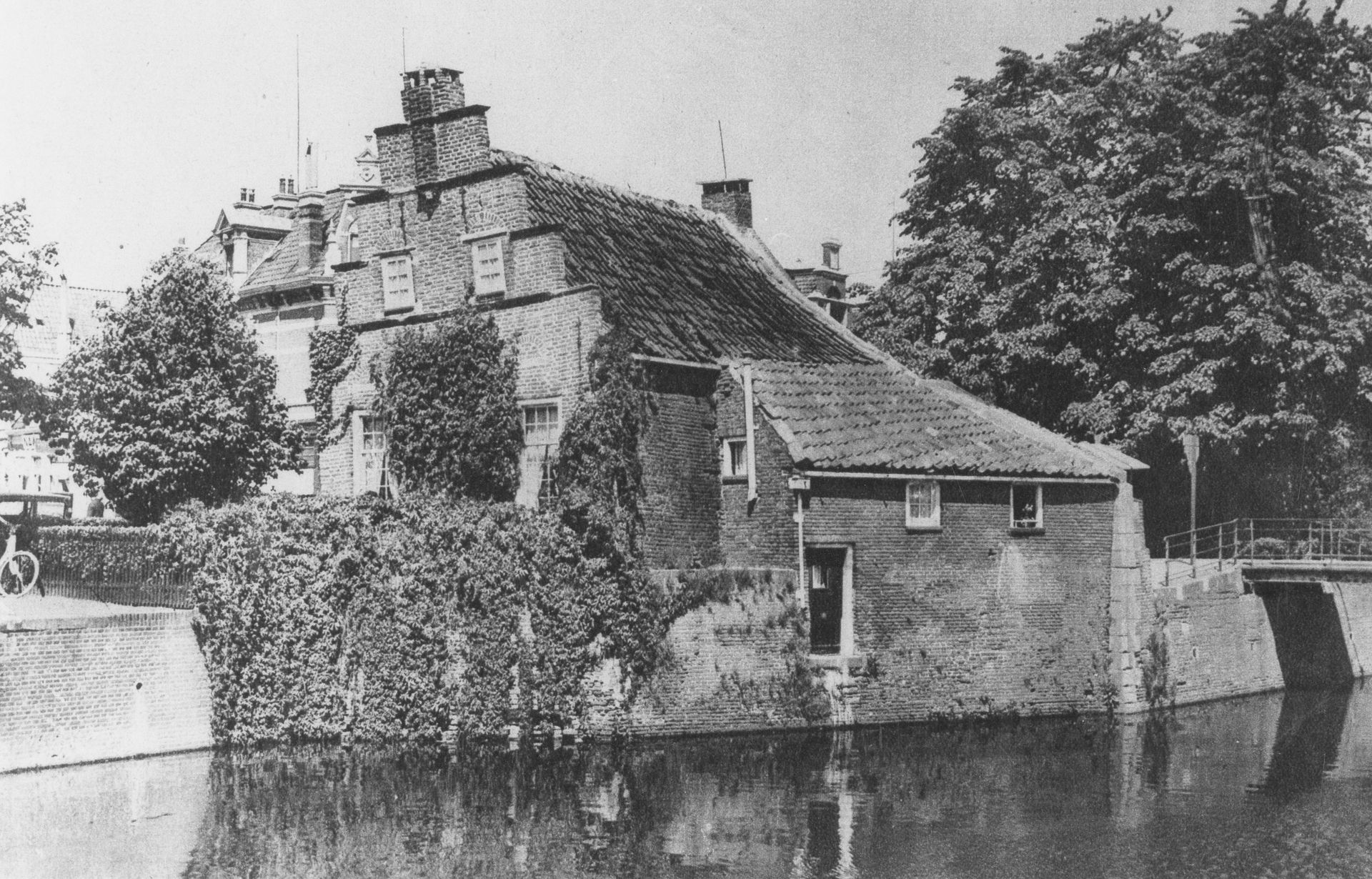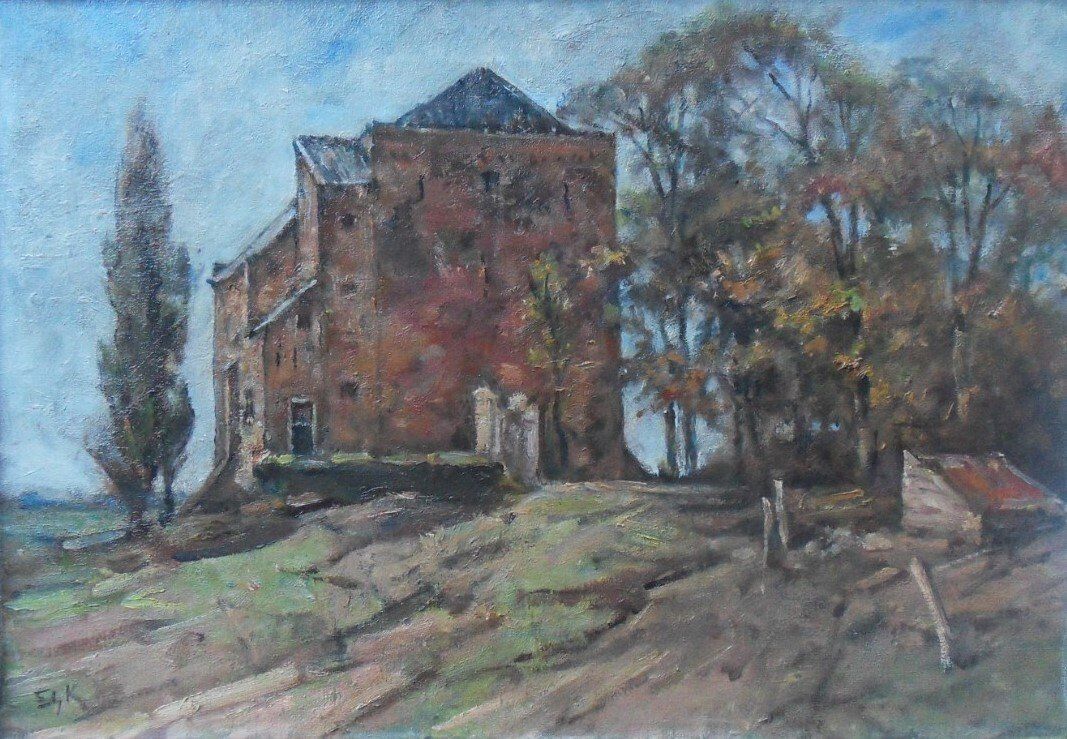DE GROENTEWINKEL – aquarel door Hans Royaards
Vanaf 1900-1910 verschijnen er steeds meer groentewinkels in het straatbeeld van de grote steden. Tot het verschijnen van de eerste groentewinkels kochten de mensen uit de stad vooral op de lokale markten of rechtstreeks van een boer die met paard en wagen langs de deuren kwam.
De groenteman, die tot voor kort vaak gewoon nog (groente-) boer was, begon in de stad een eigen groentewinkel. De producten kocht hij rechtstreeks in bij de boeren en telers uit de buurt. Naast groente en fruit werden er bij sommige groentewinkels ook bloemen en eenvoudige kruidenierswaren verkocht.
De groentewinkel gedijde prima in de stad, omdat stadsmensen doorgaans weinig ruimte hadden voor een eigen groentetuin en daardoor was er veel vraag naar verse groente en fruit. Klanten overhandigden hun boodschappenlijstjes aan de medewerker achter de balie, die vervolgens alle producten voor de klant in een doos of papieren zak deed. Van zelfbediening was nog geen sprake. Net als het lokale café had de groentewinkel een sociale functie, waar iedereen elkaar kende en veel werd besproken.
De historische groentewinkel, zoals te zien op de mooie aquarel door Hans Royaards uit het begin van de jaren ’50 met een groentewinkel in Amsterdam, is helaas inmiddels vrijwel overal uit het straatbeeld verdwenen. Vaak was er geen opvolging of werd het na de opkomst van de grote supermarkten niet langer rendabel om de winkel draaiende te houden. De aquarel door Hans Royaards geeft een goed beeld van de bijzondere sfeer van de historische groentewinkel en de aantrekking in het straatbeeld die daar van uit ging. Niet ondenkbaar dat Royaards zelf hier een graag geziene klant was.
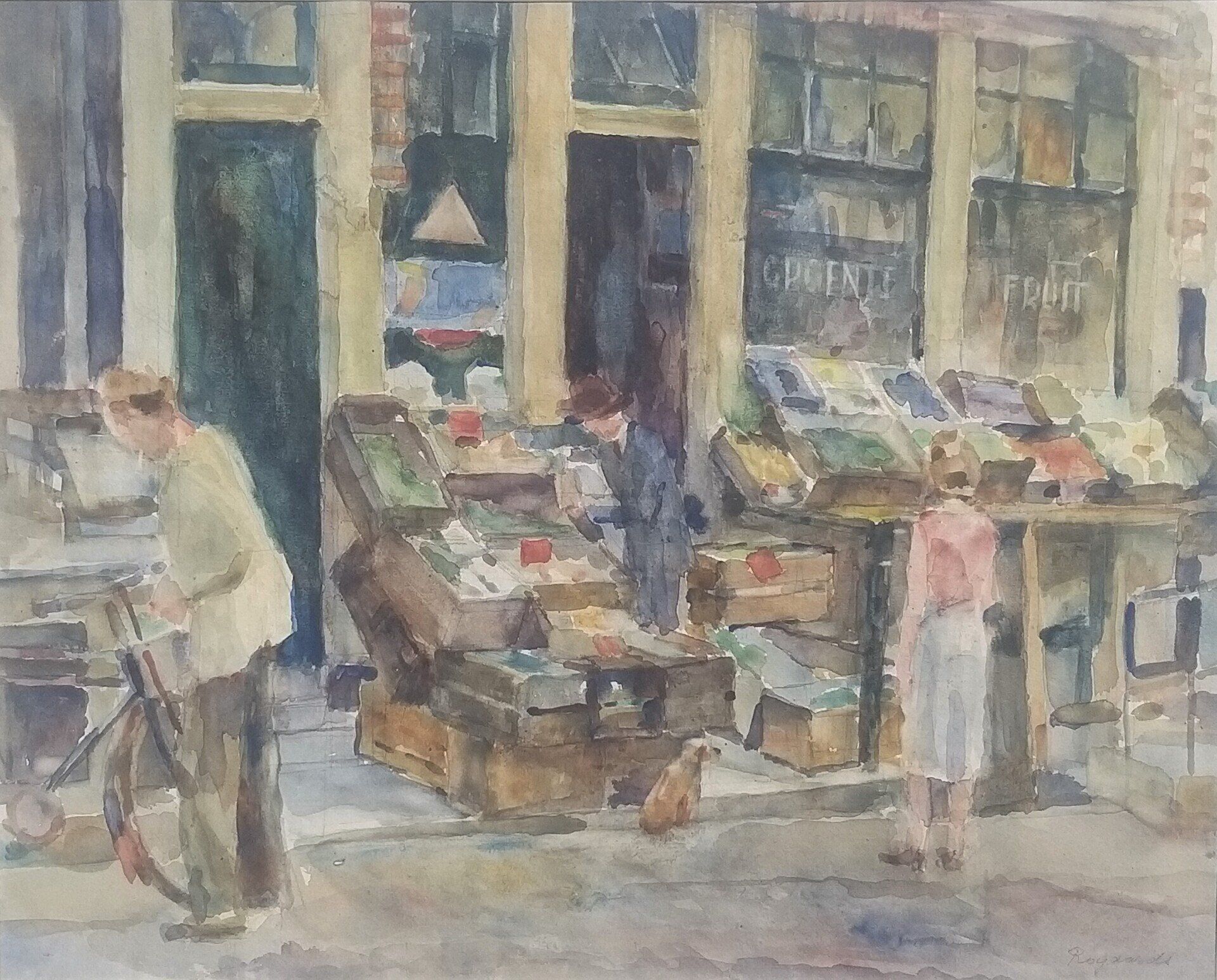
THE GREENGROCER'S SHOP – watercolor by Hans Royaards
From 1900-1910, more and more vegetable stores appeared on the streets of the big cities. Until the appearance of the first vegetable stores, people from the city mainly bought at the local markets or directly from a farmer who came to the doors with a horse and carriage.
The greengrocer, who until recently was often just a (vegetable) farmer, started his own vegetable store in the city. He bought the products directly from the farmers and growers in the area. In addition to fruit and vegetables, some greengrocers also sold flowers and simple groceries.
The greengrocer's store thrived in the city because city people usually had little space for their own vegetable garden and therefore fresh fruits and vegetables were in high demand. Customers handed their shopping lists to the employee behind the counter, who then put all the products for the customer in a box or paper bag. Self-service was not yet in question. Like the local café, the greengrocer's store had a social function, where everyone knew each other and much was discussed.
The historic greengrocer's store, as shown on the beautiful watercolor by Hans Royaards from the early 1950s with a greengrocer's store in Amsterdam, has unfortunately now disappeared from the street scene almost everywhere. Often there was no successor or after the rise of the big supermarkets it was no longer profitable to keep the store running. The watercolor by Hans Royaards gives a good impression of the special atmosphere of the historic greengrocer's store and the attraction it had in the streetscape. It is not inconceivable that Royaards himself was a welcome customer here.
